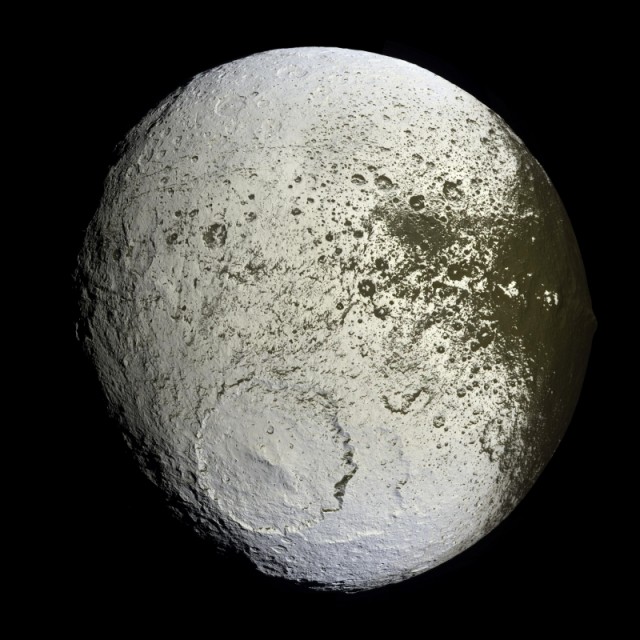
Saturn's moon Iapetus. Note the odd shape and the equatorial ridge (best visible at the right edge of the moon).
Saturn's moon Iapetus has many unique features that stand out even among the odd Solar System satellites. Its shape is very walnut-like: flattened at the poles, bulging strongly at the equator, with an equatorial mountain ridge nearly 20 kilometers high running about three-quarters of its circumference. Unlike any other known object, the face that points in the direction of its motion is dark in color, while the trailing face is bright white. Some of these mysteries have plausible solutions, but others remain unsolved.
A new observation described by Kelsi N. Singer, William B. McKinnon, Paul M. Schenk, and Jeffery M. Moore adds to Iapetus's marvelous weirdness. Analyzing images from the Cassini space probe, they found huge ice avalanches on the moon's surface. These avalanches are known as long-runout because they extend much farther than a typical landslide. Because Iapetus has no atmosphere or groundwater—implicated in some long-runout landslide models—the researchers concluded local melting of ice reduces the friction, allowing the rubble to travel great distances with little resistance.
Unlike many other icy moons of similar size, Iapetus has a great deal of topological variation. Beyond the tall equatorial ridge, it has extremely large impact craters, some as deep as 25km. With such drastic contrasts between highlands and basins, Iapetus is among the most geologically rugged bodies in the Solar System. Its composition is largely ice, and its overall density is barely larger than water's.
Read 6 remaining paragraphs | Comments
DIGITAL JUICE
No comments:
Post a Comment
Thank's!